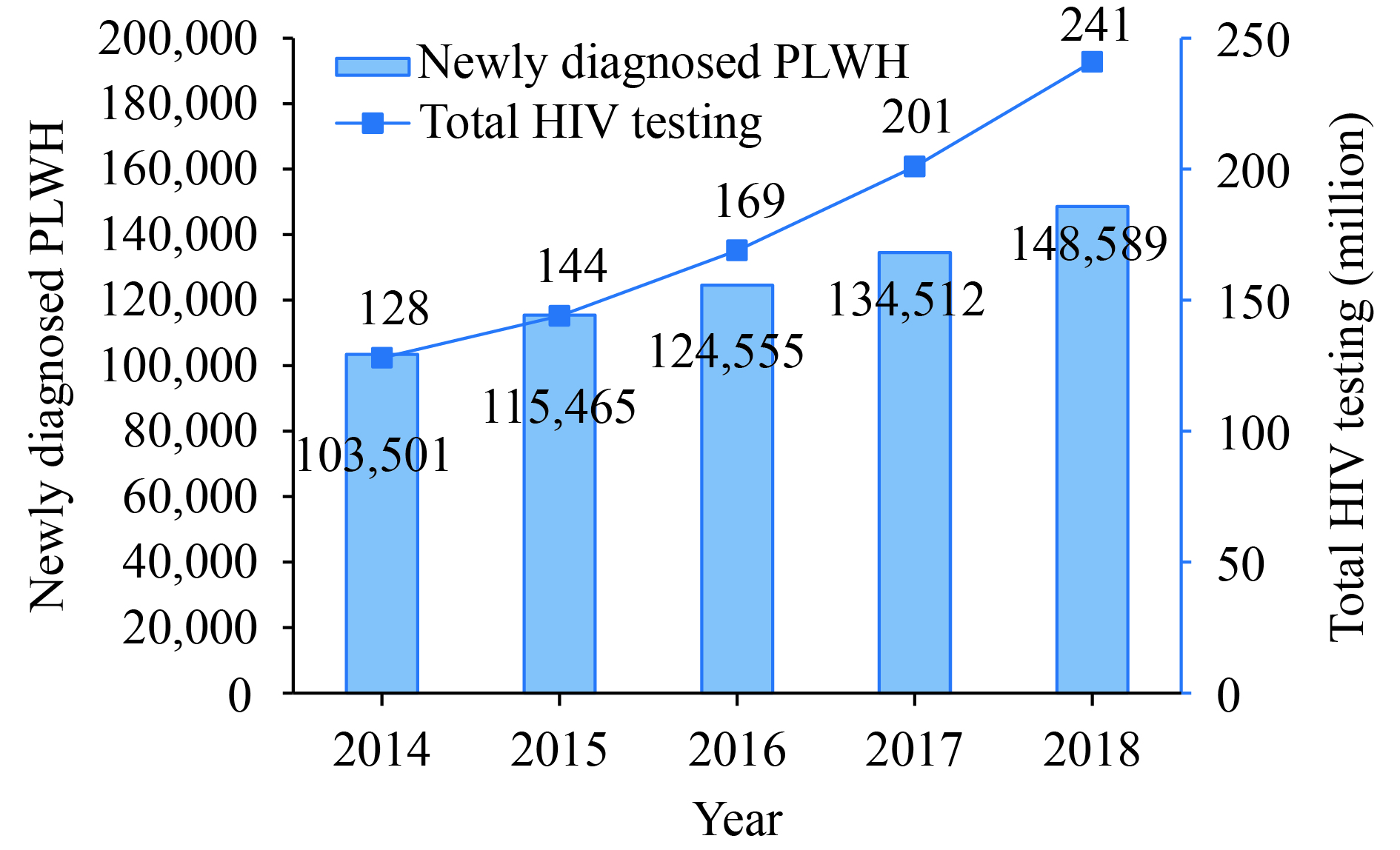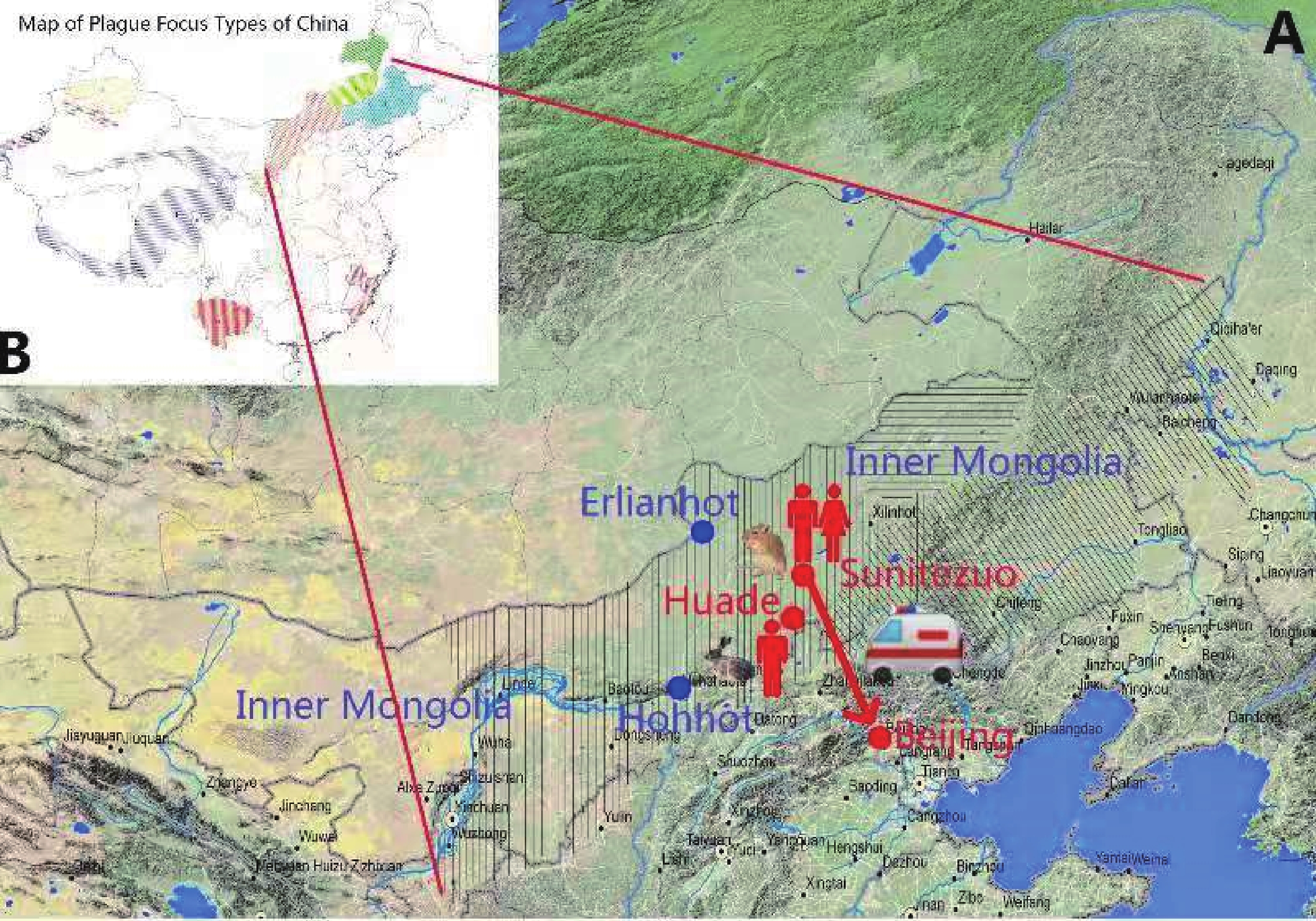2019 Vol. 1, No. 1
What is already known about this topic?
Since the Joint United Nations Programme on HIV and AIDS (UNAIDS) announced the 90-90-90 targets to control the global HIV epidemic in 2014, many countries have undertaken innovative measures to achieve this goal. The National Center for AIDS/STD Control and Prevention (NCAIDS) of China CDC convenes experts annually to evaluate the national progress towards these indicators. The most recent progress of 90-90-90 targets in China has not been previously published.
What is added by this report?
At the end of 2018, the percentage of living with HIV (PLWH) who had received a confirmed HIV diagnosis in China was 68.9% (61.5%-78.3%). The antiretroviral treatment coverage of diagnosed PLWH was 83.4%, and among patients on treatment for at least 12 months, 94.2% achieved viral suppression. This provides most recent progress of 90-90-90 target in China.
What are the implications for public health practice?
China has made significant strides in curbing the HIV epidemic, but analysis on progress for the first 90 target for HIV testing remains out of reach. Innovative testing strategies may need to be developed to ensure that more PLWH can be identified.
What is already known about this topic?
Short-term exposure to PM2.5 has been associated with population excess death. This issue is of critical concern in China given its high level of exposure to PM2.5 compared to that of the rest of the world.
What is added by this report?
Existing studies were conducted from 2013-2015 and have failed to capture the full effects of China’s actions towards cleaner air in recent years, such as the first Action Plan for Air Pollution Prevention and Control issued in 2013. This study uses the longest time series data to date from 2013-2018, provides the latest evidence on PM2.5 and cause-specific death nationwide, and identifies regional patterns of PM2.5-related effects as well as PM2.5-related susceptible populations.
What are the implications for public health practice?
This study suggests that the development of standards and the implementation of actions to clean the air and protect public health should be tailored to PM2.5-related sensitive diseases, susceptible populations, and regional patterns.
What is already known about this topic?
Plague is an acute infectious disease caused by Yersinia pestis (Y. pestis)
What is added by this report?
This is the first case of pneumonic plague imported into a major city since the founding of the People's Republic of China. Two primary pneumonic plague cases (Patients A and B) found in residents of Inner Mongolia were confirmed in Beijing on November 12, 2019. Another case (Patient C) of Y. pestis was identified as bubonic plague on November 14. Patient A most likely became infected from aerosol exposure to infective droplets while digging on his farm, located in an Meriones unguiculatus (M. unguiculatus) natural plague focus. Patient B became infected from contact with Patient A (her husband). Patient C became infected after skinning a dead hare. There was no epidemiological relationship between the Patient A/B and Patient C.
What are the implications for public health practice?
When epizootic plague is detected, local health-care providers and the public should be alerted about any possible risks. Public education efforts should focus on promoting personal protection measures.



 Subscribe for E-mail Alerts
Subscribe for E-mail Alerts CCDC Weekly RSS Feed
CCDC Weekly RSS Feed

